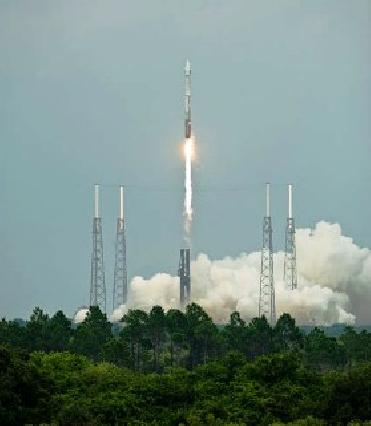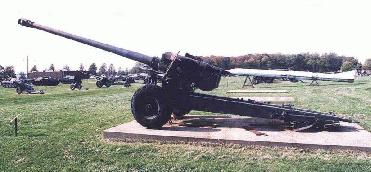
A United Launch Alliance Atlas V rocket roars into space carrying NASA's Lunar Reconnaissance Orbiter and Lunar Crater Observation and Sensing Satellite. Photo credit: NASA
CALLIFORNIA (BNS): The Lunar Crater Observation and Sensing Satellite, or LCROSS, successfully completed its most significant early mission milestone with a lunar swing-by and calibration of its science instruments. The satellite will search for water ice in a permanently shadowed crater at the moon's South Pole.
With the assist of the moon's gravity, LCROSS and its attached Centaur booster rocket successfully entered into polar Earth orbit at 6:20 a.m. PDT on Tuesday.
"The successful completion of the LCROSS swingby proves the science instruments are functioning as expected. It is a testament to the hard work and dedication of the entire team, we are elated at the results from the maneuver and eagerly anticipate the impacts in early October." NASA press release quoted Dan Andrews, LCROSS project manager at NASA's Ames Research Center as saying.
During its swing by the moon, the spacecraft's instruments were turned on and calibrated by scanning three sites on the lunar surface. These sites were the craters Mendeleev, Goddard C and Giordano Bruno.
They were selected because they offer a variety of terrain types, compositions and illumination conditions. The spacecraft also scanned the lunar horizon to confirm its instruments are aligned in preparation for observing the Centaur's debris plume.
"Each instrument returned good data that the science team will spend the next few weeks analyzing," said Anthony Colaprete, LCROSS project scientist at Ames. "These data will ensure we are as prepared as possible for monitoring and interpreting data we receive during impact."
LCROSS and its attached Centaur upper stage rocket are now in a long, looping polar orbit around Earth and the moon. Each orbit will be roughly perpendicular to the moon's orbit around Earth and take about 37 days to complete. Before impact, the spacecraft and Centaur will make approximately three orbits.
LCROSS and the Centaur separately will collide with the moon at approximately 7:30 a.m. EDT on Oct. 9. The spacecraft and Centaur are targeted to impact the moon's South Pole near the Cabeus region. The exact target crater will be identified 30 days before impact, after considering information collected by NASA's Lunar Reconnaissance Orbiter and observatories on Earth.
 Previous Article
Previous Article Next Article
Next Article












The Indian Air Force, in its flight trials evaluation report submitted before the Defence Ministry l..
view articleAn insight into the Medium Multi-Role Combat Aircraft competition...
view articleSky enthusiasts can now spot the International Space Station (ISS) commanded by Indian-American astr..
view article